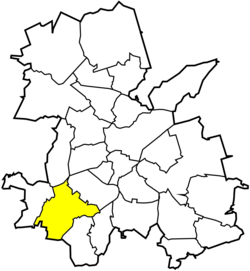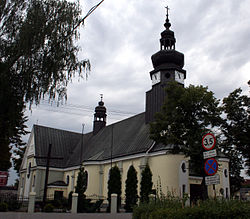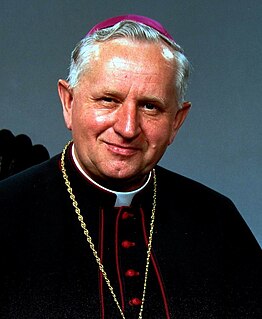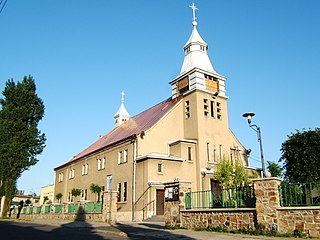| Niedobczyce | ||
|---|---|---|
| Rybnik District | ||
Sacred Heart church | ||
| ||
 Location of Niedobczyce within Rybnik | ||
| Coordinates: 50°04′00″N18°29′39″E / 50.06667°N 18.49417°E Coordinates: 50°04′00″N18°29′39″E / 50.06667°N 18.49417°E | ||
| Country | ||
| Voivodeship | Silesian | |
| County/City | Rybnik | |
| Population (2013) | ||
| • Total | 12,300 | |
| Time zone | CET (UTC+1) | |
| • Summer (DST) | CEST (UTC+2) | |
| Area code(s) | (+48) 032 | |
Niedobczyce (German : Niebobschütz) is a district of Rybnik, Silesian Voivodeship, southern Poland. Between 1955 and 1975 it was an independent town On December 31, 2013 it had about 12,300 inhabitants. [1]

German is a West Germanic language that is mainly spoken in Central Europe. It is the most widely spoken and official or co-official language in Germany, Austria, Switzerland, South Tyrol (Italy), the German-speaking Community of Belgium, and Liechtenstein. It is also one of the three official languages of Luxembourg and a co-official language in the Opole Voivodeship in Poland. The languages which are most similar to German are the other members of the West Germanic language branch: Afrikaans, Dutch, English, the Frisian languages, Low German/Low Saxon, Luxembourgish, and Yiddish. There are also strong similarities in vocabulary with Danish, Norwegian and Swedish, although those belong to the North Germanic group. German is the second most widely spoken Germanic language, after English.
In the Polish system of local administration, a dzielnica is an administrative subdivision or quarter of a city or town. A dzielnica may have its own elected council, and those of Warsaw each have their own mayor (burmistrz). Like the osiedle and sołectwo, a dzielnica is an auxiliary unit of a gmina. These units are created by decision of the gmina council, and do not have legal personality in their own right.

Rybnik(


























